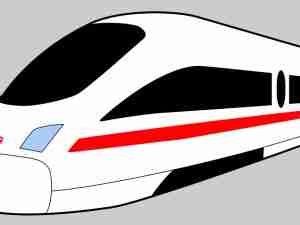Gil Carmichael, Founding Chairman of the Board of Directors of the Intermodal Transportation Institute (ITI) at the University of Denver, says that President Barack Obama, with his commitment to a nationwide, intermodal, high-speed rail system, has presented the most ambitious transportation infrastructure program in the US since the 1950s, when President Eisenhower initiated the development of the Interstate Highway System. "I would like to congratulate President Obama on his vision for creating a 21st century, rail-based, Interstate II transportation system," says Carmichael. 'This high-speed rail system proposal addresses one of the founding tenets of ITI, the promotion of an ethical, efficient, and seamless transportation system.'
Carmichael also served as Federal Railroad Administrator from 1989 to 1993 under former president George H.W. Bush and as Chairman of the Amtrak Reform Council through its sunset in 2002. Since 1991 he has been a strong advocate for what he calls Interstate II, a rail-based, intermodal transportation system. "In the 1950s, President Eisenhower had the foresight to establish a four-lane, 43,000-mile, Interstate Highway System to meet the needs of our rapidly growing and mobile population. In 2009, however, we live in a global economy with a population that has doubled since the 1950s, and we have a congested and crumbling infrastructure that requires immediate attention if we are to remain economically competitive."
The answer to our infrastructure muddle, Carmichael says, lies not in building more highways, but in changing the manner in which Americans travel, as President Obama's April 16th strategic plan outlines. The President's plan recognizes that we already have in-place a North American railway system that serves 90 states and provinces with 240,000 miles of right-of-way that is owned by the railroads -- and that therein lies the solution to establishing a cohesive, 21st century, national transportation system. Obama's proposal initially allocates $8 billion for intercity, high-speed rail transportation; another $1.3 billion for Amtrak; and another $5 billion over the next five years. This investment will also help rebuild the economy as it reshapes how we travel. Once completed, these projects will also re-invigorate the center of our cities and provide new connections to our major airports.
"President Obama clearly recognizes that his proposal is only the first phase of what will become a three-part, high-speed, intercity transportation network that will connect all our major cities, ports, and airports via rail," says Carmichael. "This is the first time an intermodal strategy with a strong emphasis on both freight and passenger rail transportation has been proposed by the federal government. This intermodal strategy promotes an ethical, fuel-efficient, and environmentally sustainable transportation system that with the completion of phase three will also help to achieve energy independence through the eventual electrification of the rail-based national transportation grid, as we seek to lessen our carbon footprint and move toward cleaning up the global environment and alleviating freight congestion."
Carmichael believes that when completed by 2020 or 2030, following the addition of billions of dollars more in investments, this strategic transportation plan will not only have created three times more freight capacity than currently exists but will also have built a nationwide, high-speed, passenger rail network, capable of traveling up to 90-125 miles per hour and connecting hundreds of city pairs and millions of passengers. This will greatly relieve the stress on our overburdened highway system and be dramatically safer.
"Phase I of Interstate II represents an important policy shift toward developing and maintaining a national, intermodal, passenger transportation network, better than those that exist in Europe, and this transportation network will be ba







